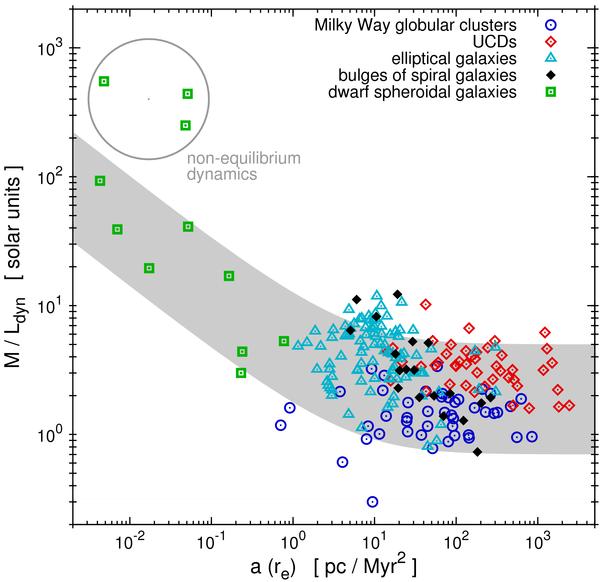Fig. 8

The correlation between the acceleration a(re) and the dynamical mass-luminosity ratio (M/L)dyn derived assuming Newtonian dynamics is shown for the same objects as in Fig. 7. The shaded region indicates the range in (M/L)dyn as it follows directly from MOND models (without any parameter adjustments) using Eq. (19). The graph shows the consistency of the data in a MONDian universe for an observer who interprets observations with Newtonian dynamics. Encircled dwarf spheroidals outside this range (UMa, Dra, and UMi) may indicate non-equilibrium dynamics, either because the whole system is unbound, or because of unbound interloper stars among the member stars (see Sect. 6.4.2). That virtually all pressure-supported stellar systems fall in the shaded MOND region suggests a successful consistency check. That is, stellar dynamics is MONDian rather than Newtonian on galactic scales.
Current usage metrics show cumulative count of Article Views (full-text article views including HTML views, PDF and ePub downloads, according to the available data) and Abstracts Views on Vision4Press platform.
Data correspond to usage on the plateform after 2015. The current usage metrics is available 48-96 hours after online publication and is updated daily on week days.
Initial download of the metrics may take a while.


